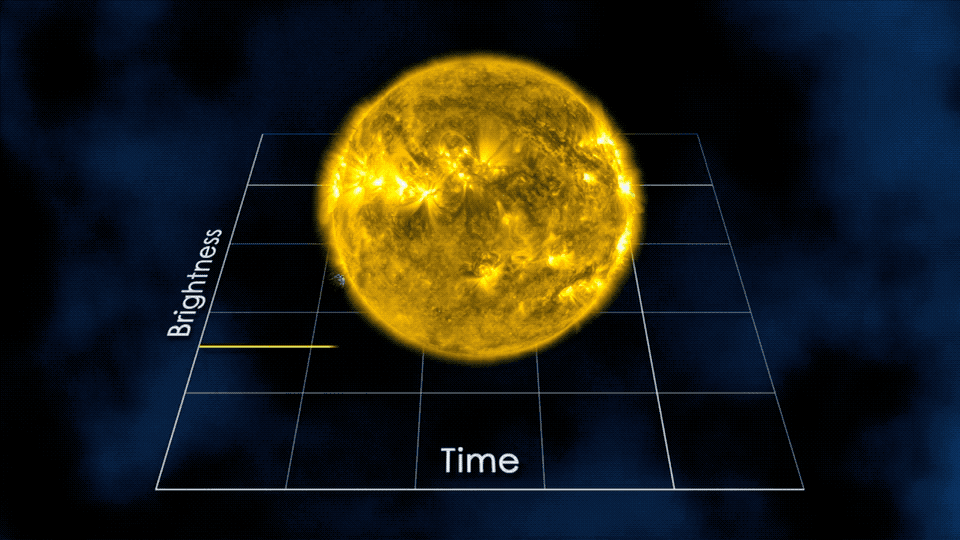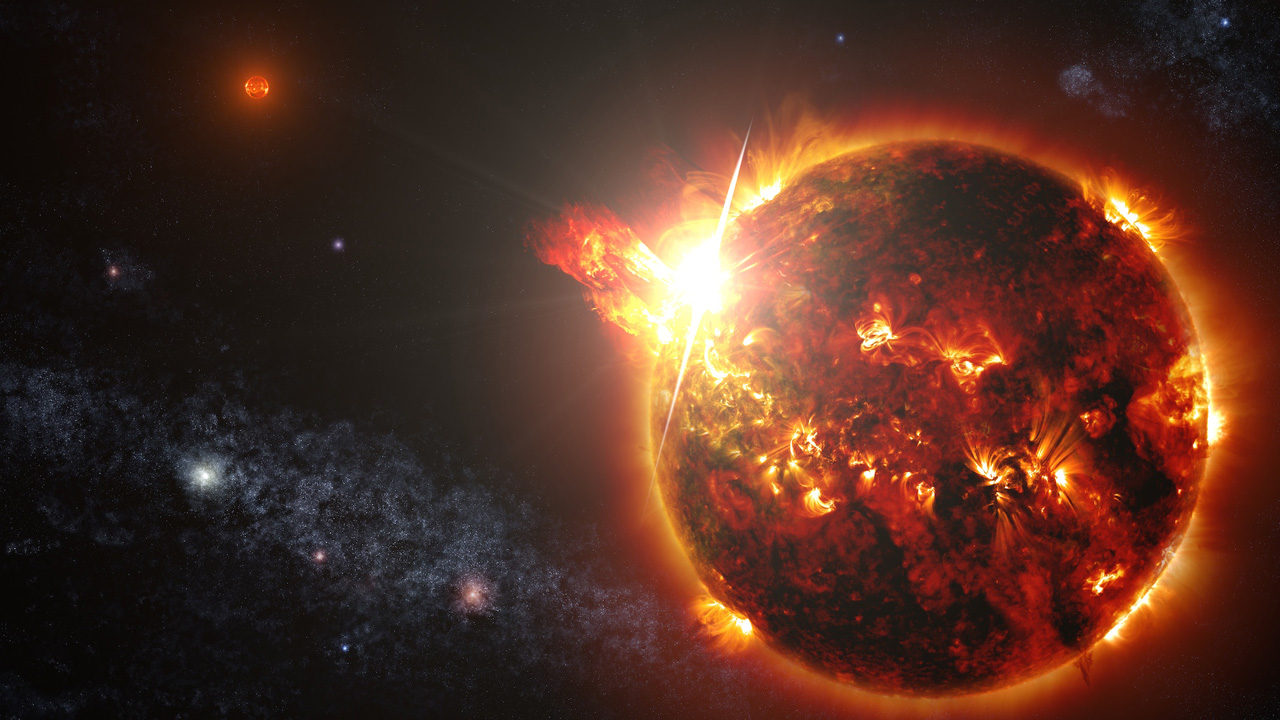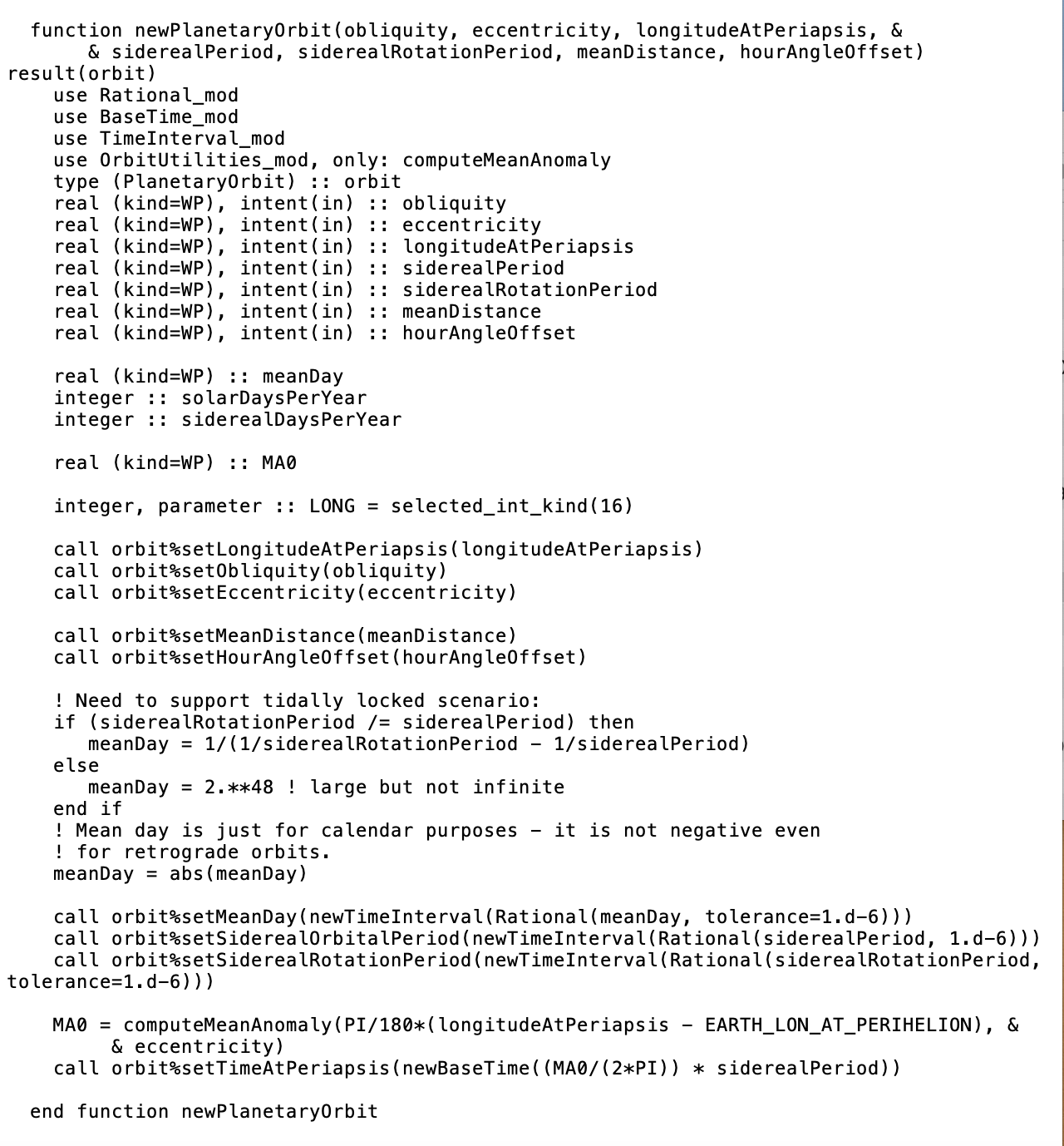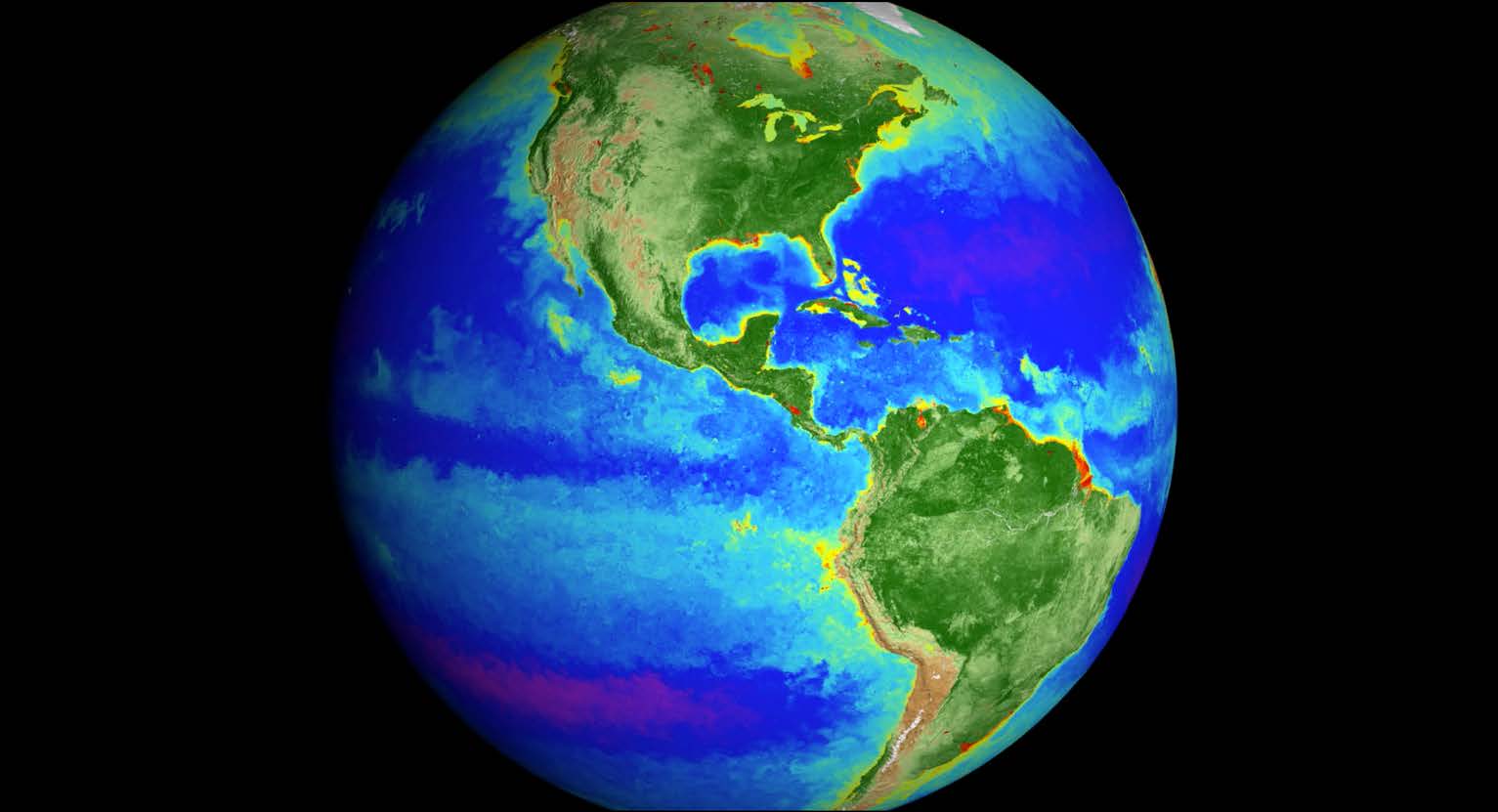In a generic brick building on the northwestern edge of NASA’s Goddard Space Flight Center campus in Greenbelt, Maryland, thousands of computers packed in racks the size of vending machines hum in a deafening chorus of data crunching. Day and night, they spit out 7 quadrillion calculations per second. These machines collectively are known as NASA’s Discover supercomputer and they are tasked with running sophisticated climate models to predict Earth’s future climate.
But now, they’re also sussing out something much farther away: whether any of the more than 4,000 curiously weird planets beyond our solar system discovered in the past two decades could support life.
Scientists are finding that the answer not only is yes, but that it’s yes under a range of surprising conditions compared to Earth. This revelation has prompted many of them to grapple with a question vital to NASA’s search for life beyond Earth. Is it possible that our notions of what makes a planet suitable for life are too limiting?
The next generation of powerful telescopes and space observatories will surely give us more clues. These instruments will allow scientists for the first time to analyze the atmospheres of the most tantalizing planets out there: rocky ones, like Earth, that could have an essential ingredient for life — liquid water — flowing on their surfaces.
For the time being, it’s difficult to probe far-off atmospheres. Sending a spacecraft to the closest planet outside our solar system, or exoplanet, would take 75,000 years with today’s technology. Even with powerful telescopes nearby exoplanets are virtually impossible to study in detail. The trouble is that they’re too small and too drowned out by the light of their stars for scientists to make out the faint light signatures they reflect — signatures that could reveal the chemistry of life at the surface.
In other words, detecting the ingredients of the atmospheres around these phantom planets, as many scientists like to point out, is like standing in Washington, D.C., and trying to glimpse a firefly next to a searchlight in Los Angeles. This reality makes climate models critical to exploration, said chief exoplanetary scientist Karl Stapelfeldt, who’s based at NASA’s Jet Propulsion Laboratory in Pasadena, California.
“The models make specific, testable predictions of what we should see,” he said. “These are very important for designing our future telescopes and observing strategies.”
Is the Solar System a Good Role Model?
In scanning the cosmos with large ground-based and space telescopes, astronomers have discovered an eclectic assortment of worlds that seem drawn from the imagination.
“For a long time, scientists were really focused on finding Sun- and Earth-like systems. That’s all we knew,” said Elisa Quintana, a NASA Goddard astrophysicist who led the 2014 discovery of Earth-sized planet Kepler-186f. “But we found out that there’s this whole crazy diversity in planets. We found planets as small as the Moon. We found giant planets. And we found some that orbit tiny stars, giant stars and multiple stars.”
Indeed, most of the planets detected by NASA’s Kepler space telescope and the new Transiting Exoplanet Survey Satellite, as well as ground-based observations, don’t exist in our solar system. They fall between the size of a terrestrial Earth and a gaseous Uranus, which is four times bigger than this planet.

Planets closest in size to Earth, and most likely in theory to have habitable conditions, so far have been found only around “red dwarf” stars, which make up a vast majority of stars in the galaxy. But that’s likely because red dwarfs are smaller and dimmer than the Sun, so the signal from planets orbiting them is easier for telescopes to detect.
Because red dwarfs are small, planets have to lap uncomfortably close — closer than Mercury is to the Sun — to stay gravitationally attached to them. And because red dwarfs are cool, compared to all other stars, planets have to be closer to them to draw enough heat to allow liquid water to pool on their surfaces.

Among the most alluring recent discoveries in red dwarf systems are planets like Proxima Centauri b, or simply Proxima b. It’s the closest exoplanet. There are also seven rocky planets in the nearby system TRAPPIST-1. Whether or not these planets could sustain life is still a matter of debate. Scientists point out that red dwarfs can spew up to 500 times more harmful ultraviolet and X-ray radiation at their planets than the Sun ejects into the solar system. On the face of it, this environment would strip atmospheres, evaporate oceans and fry DNA on any planet close to a red dwarf.
Yet, maybe not. Earth climate models are showing that rocky exoplanets around red dwarfs could be habitable despite the radiation.
The Magic is in the Clouds
Anthony Del Genio is a recently retired planetary climate scientist from NASA’s Goddard Institute for Space Studies in New York City. During his career he simulated the climates of Earth and of other planets, including Proxima b.
Del Genio’s team recently simulated possible climates on Proxima b to test how many would leave it warm and wet enough to host life. This type of modeling work helps NASA scientists identify a handful of promising planets worthy of more rigorous study with NASA’s forthcoming James Webb Space Telescope.
“While our work can’t tell observers if any planet is habitable or not, we can tell them whether a planet is smack in the midrange of good candidates to search further,” Del Genio said.
Credits: NASA’s Goddard Space Flight Center
Download this video in HD formats from NASA Goddard’s Scientific Visualization Studio
Proxima b orbits Proxima Centauri in a three-star system located just 4.2 light years from the Sun. Besides that, scientists don’t know much about it. They believe it’s rocky, based on its estimated mass, which is slightly larger than Earth’s. Scientists can infer mass by watching how much Proxima b tugs on its star as it orbits it.
The problem with Proxima b is that it’s 20 times closer to its star than Earth is to the Sun. Therefore, it takes the planet only 11.2 days to make one orbit (Earth takes 365 days to orbit the Sun once). Physics tells scientists that this cozy arrangement could leave Proxima b gravitationally locked to its star, like the Moon is gravitationally locked to Earth. If true, one side of Proxima b faces the star’s intense radiation while the other one freezes in the darkness of space in a planetary recipe that doesn’t bode well for life on either side.
But Del Genio’s simulations show that Proxima b, or any planet with similar characteristics, could be habitable despite the forces conspiring against it. “And the clouds and oceans play a fundamental role in that,” Del Genio said.

Del Genio’s team upgraded an Earth climate model first developed in the 1970s to create a planetary simulator called ROCKE-3D. Whether Proxima b has an atmosphere is an open and critical question that will hopefully be settled by future telescopes. But Del Genio’s team assumed that it does.
With each simulation Del Genio’s team varied the types and amounts of greenhouse gases in Proxima b’s air. They also changed the depth, size, and salinity of its oceans and adjusted the ratio of land to water to see how these tweaks would influence the planet’s climate.
Models such as ROCKE-3D begin with only grains of basic information about an exoplanet: its size, mass, and distance from its star. Scientists can infer these things by watching the light from a star dip as a planet crosses in front of it, or by measuring the gravitational tugging on a star as a planet circles it.
These scant physical details inform equations that comprise up to a million lines of computer code needed to build the most sophisticated climate models. The code instructs a computer like NASA’s Discover supercomputer to use established rules of nature to simulate global climate systems. Among many other factors, climate models consider how clouds and oceans circulate and interact and how radiation from a sun interacts with a planet’s atmosphere and surface.
When Del Genio’s team ran ROCKE-3D on Discover they saw that Proxima b’s hypothetical clouds acted like a massive sun umbrella by deflecting radiation. This could lower the temperature on Proxima b’s sun-facing side from too hot to warm.
Other scientists have found that Proxima b could form clouds so massive they would blot out the entire sky if one were looking up from the surface.
“If a planet is gravitationally locked and rotating slowly on its axis a circle of clouds forms in front of the star, always pointing towards it. This is due to a force known as the Coriolis effect, which causes convection at the location where the star is heating the atmosphere,” said Ravi Kopparapu, a NASA Goddard planetary scientist who also models the potential climates of exoplanets. “Our modeling shows that Proxima b could look like this.”
In addition to making Proxima b’s day side more temperate than expected, a combination of atmosphere and ocean circulation would move warm air and water around the planet, thereby transporting heat to the cold side. “So you not only keep the atmosphere on the night side from freezing out, you create parts on the night side that actually maintain liquid water on the surface, even though those parts see no light,” Del Genio said.
Taking a New Look at an Old Role Model
Atmospheres are envelopes of molecules around planets. Besides helping maintain and circulate heat, atmospheres distribute gases that nourish life or are produced by it.
These gases are the so-called “biosignatures” scientists will look for in the atmospheres of exoplanets. But what exactly they should be looking for is still undecided.
Earth’s is the only evidence scientists have of the chemistry of a life-sustaining atmosphere. Yet, they have to be cautious when using Earth’s chemistry as a model for the rest of the galaxy. Simulations from Goddard planetary scientist Giada Arney, for instance, show that even something as simple as oxygen — the quintessential sign of plant life and photosynthesis on modern Earth — could present a trap.
Arney’s work highlights something interesting. Had alien civilizations pointed their telescopes toward Earth billions of years ago hoping to find a blue planet swimming in oxygen, they would have been disappointed; maybe they would have turned their telescopes toward another world. But instead of oxygen, methane could have been the best biosignature to look for 3.8 to 2.5 billion years ago. This molecule was produced in abundance back then, likely by the microorganisms quietly flourishing in the oceans.
“What is interesting about this phase of Earth’s history is that it was so alien compared to modern Earth,” Arney said. “There was no oxygen yet, so it wasn’t even a pale blue dot. It was a pale orange dot,” she said, referencing the orange haze produced by the methane smog that may have shrouded early Earth.
Findings like this one, Arney said, “have broadened our thinking about what’s possible among exoplanets,” helping expand the list of biosignatures planetary scientists will look for in distant atmospheres.
Building a Blueprint for Atmosphere Hunters
While the lessons from planetary climate models are theoretical — meaning scientists haven’t had an opportunity to test them in the real world — they offer a blueprint for future observations.
One major goal of simulating climates is to identify the most promising planets to turn to with the Webb telescope and other missions so that scientists can use limited and expensive telescope time most efficiently. Additionally, these simulations are helping scientists create a catalog of potential chemical signatures that they will one day detect. Having such a database to draw from will help them quickly determine the type of planet they’re looking at and decide whether to keep probing or turn their telescopes elsewhere.
Discovering life on distant planets is a gamble, Del Genio noted: “So if we want to observe most wisely, we have to take recommendations from climate models, because that’s just increasing the odds.”
The researchers and science profiled in this story are part of the Sellers Exoplanet Environments Collaboration, or SEEC, at NASA’s Goddard Space Flight Center. The multidisciplinary collaborative brings together experts from planetary and Earth sciences, with those from astrophysics and heliophysics, to build the most comprehensive and sophisticated computer models of exoplanets in order to better prepare for current and future exoplanet observations. To learn more, visit: https://seec.gsfc.nasa.gov/index.html.
By Lonnie Shekhtman
NASA’s Goddard Space Flight Center, Greenbelt, Md.




























